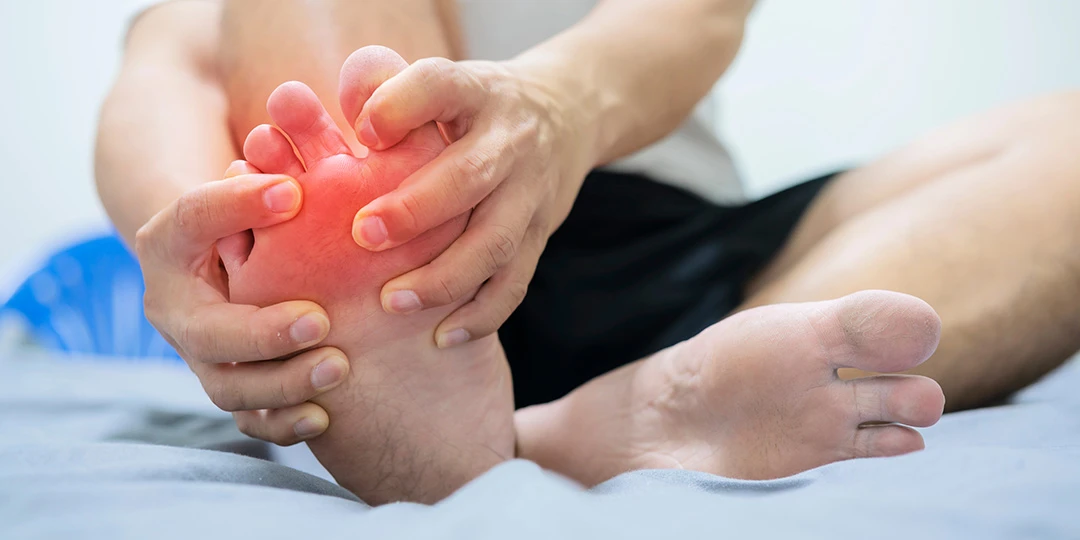As we age, our bodies undergo a variety of changes, including changes in circulation and blood flow. This can sometimes result in swelling in the hands and feet. In this article, we will explore some of the common causes of swelling in hands and feet and provide tips for improving circulation to reduce swelling and improve overall health and wellness.
Causes of Swelling in Hands and Feet
Poor Circulation: As we get older, blood vessels lose elasticity, which makes it harder for blood to flow efficiently. This can result in poor circulation, which can cause swelling in the hands and feet.
Hormonal Changes: Women going through menopause may experience swelling in their hands and feet due to hormonal changes. Menopause causes hormonal imbalance and a drop in estrogen levels, which can lead to water retention and swelling.
Medications: Some medications can cause fluid retention, leading to swelling in the hands and feet. Medications that are known to cause this include blood pressure medications, steroids and antidepressants.
Heart or Kidney Problems: Swelling in the hands and feet can be a sign of heart or kidney problems. When the heart or kidneys are not functioning properly, excess fluid can build up in the body and may lead to swelling.
Injuries: Injuries to the hands and feet, such as sprains or fractures, can also cause swelling. In some cases, this swelling may persist even after the injury has healed.
Ways to Improve Circulation and Reduce Swelling
Exercise: Of course, exercise tops our list, because getting the body moving will help improve circulation and reduce swelling in the extremities. Exercise increases blood flow throughout your entire body, which can help reduce inflammation and improve overall health and wellness.
Massage: A little massage won’t hurt to help improve circulation and reduce swelling. Use gentle circular motions to massage the affected areas, or even better, leave it to the pros and consider booking a professional massage.
Elevation: Elevating the hands and feet can help reduce swelling by allowing excess fluid to drain away from these areas. Try propping up your feet with pillows while sitting or lying down, and avoid standing or sitting for long periods of time.
Compression: Wearing compression socks or gloves can help improve circulation and reduce swelling in the hands and feet. These garments apply pressure to the affected areas, which can help push excess fluid out of the body.
Diet: Eating a healthy diet that is low in sodium and high in potassium can also help reduce swelling. Sodium can cause water retention, while potassium helps flush excess fluids out of the body. Foods high in potassium include bananas, avocados and leafy greens.
Hydration: Staying hydrated will help reduce swelling. Drink plenty of water to help flush out excess fluids from the body, which also helps reduce inflammation and improve overall health.
Avoiding Alcohol and Caffeine: Alcohol and caffeine are known diuretics and can dehydrate the body, which can lead to swelling. Limiting your intake can help reduce swelling in the hands and feet.
The Bottom Line…
In conclusion, swelling in the hands and feet is a common problem for people. There are many potential causes of this swelling, including poor circulation, hormonal changes, medications, heart or kidney problems, and injuries. Fortunately, there are many ways to improve circulation and reduce swelling, including exercise, massage, elevation, compression, diet, hydration, and avoiding alcohol and caffeine.
If you are experiencing swelling in your hands or feet, it is important to talk to your healthcare provider to determine the underlying cause and develop an appropriate treatment plan.
You can also take steps to improve blood flow with the proper natural ingredients. Nitro Wood is doctor-endorsed by Dr. David FIlsoof, a cardiologist at Cedars-Sinai in Los Angeles. The premier ingredient, plant-based S7®, boosts nitric oxide in your body by up to 230% to help improve blood flow to your most important vital organs — including your hands and feet!


